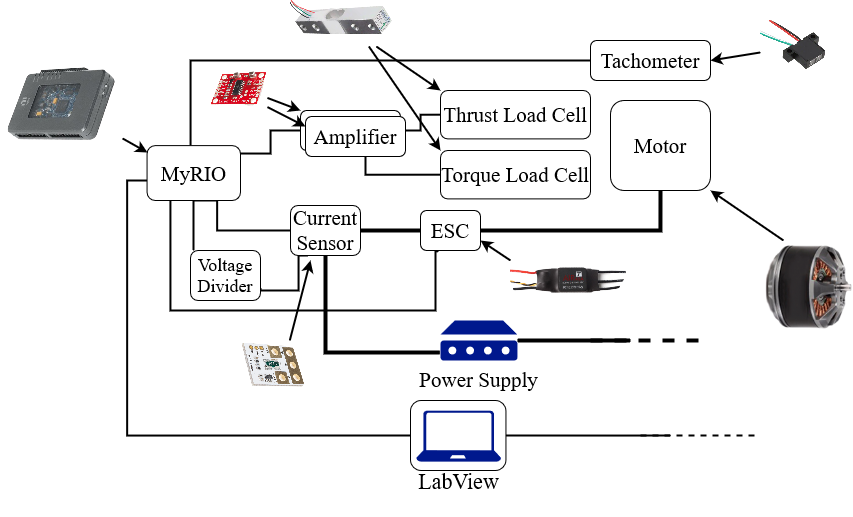An Open-Source Benchmarking Platform for Coaxial Rotor Systems: Improving Efficiency with a Control Allocation Strategy
Abstract:
Coaxial rotors of the type used primarily on multi-rotor Micro Aerial Vehicles (MAVs) are complex aerodynamic systems. Since aerodynamics is not the focus of the robotics community, there is not much research available investigating them. In this work, we propose an open-source benchmarking platform for coaxial rotor systems that allows us to analyse and improve their efficiency. In particular, the proposed platform is used for extensive experiments towards building a map for the whole actuation domain of coaxial systems. We test three sets of coaxial rotor systems built from off-the-shelf components using different rotor configurations. Findings from the mapping experiments include the existence of a maximum efficiency boundary, which covers the whole thrust range of each system. We also analyze how this boundary changes with respect to the rotor configuration and we compare it with the performance of coaxial rotors controlled with the current standard method (i.e., equal commands for both rotors). Finally, we characterize the operating conditions of such boundaries and propose a control allocation strategy that improves the efficiency of coaxial rotors by up to 11% over the current industry standard.
Supplementary Materials
Supplementary Materials
GitHub Repository of Codes and Designs: https://github.com/newdexterity/Coaxial-Benchmarking-Platform
Supplementary results and figures as well as their discussion can be found at the following URL: http://www.newdexterity.org/ICRA2022_CoaxialBenchmarking_SupplementaryMaterial.pdf

Diagram illustrating the components of a unit of the benchmarking platform. The platform is controlled with a LabView interface. On each side, all sensors are connected to a National Instruments MyRIO device. Both units of the platform are connected to a single PC and power supply.
